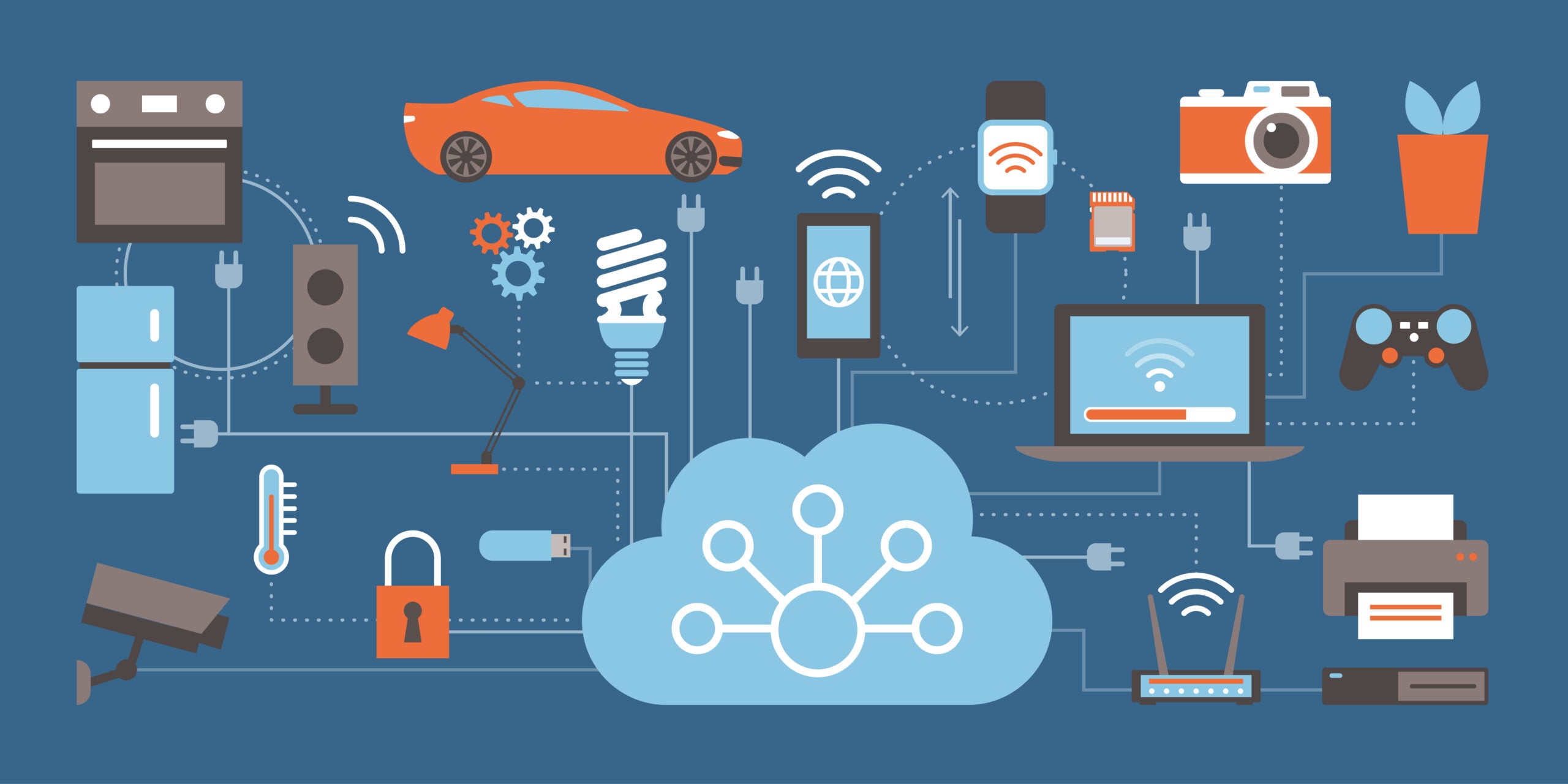The Internet of Things, or IoT, plays a huge part in automating the world. IoT refers to how different devices are connected via the web and are able influence their surroundings. Now, these devices are increasingly starting to be able to make decisions by themselves.
Driverless cars, self-operating factories and automatic health advice from fitness trackers are just three examples of how autonomous connected devices can transform society. The business implications of these innovations are huge. No wonder that GlobalData forecasts that the global IoT market will reach $1.1tn in revenue by 2024, up from $622bn in 2020.
So how did we get here? There are four key stages in the development of IoT infrastructures. Each stage is categorised by the level of intelligence of connected things. Today, we sit in stage three. However, we are slowly marching towards stage four. At which point, IoT will become pervasive and the digital landscape will look remarkably different.
Stage 1: Passive things
The first stage of an IoT infrastructure has to do with so-called passive things. Passive things can be identified by other devices, but can’t do much else. Also referred to as sensors, they are able to capture information. However, they lack the ability to communicate that information themselves. Particularly important in supply chain management, products can be identified and tracked through radio frequency identification tags. Other variables, such as temperature, can also be recorded. Examples of these sort of devices include fitness tracking devices which are able to record step counts or heart rate.
Stage 2: Active things
Passive things always require an active thing to communicate the information. This brings us to the second stage of an Iot infrastructure, which is when we introduce active things. Active things can exchange sensor data and intelligence with other devices. First collecting the data recorded by a passive thing, formatting it, and then sending it on via an internet gateway, either through wired and wireless, such as wifi, wide area networks.
For example, a mobile payment system like Apple Pay can enable any device with Apply Pay software to make a transaction when placed near a near-field communication reader. Or for many wearable fitness devices, a smart phone is required to gather analysis and publish data on a network.
How well do you really know your competitors?
Access the most comprehensive Company Profiles on the market, powered by GlobalData. Save hours of research. Gain competitive edge.

Thank you!
Your download email will arrive shortly
Not ready to buy yet? Download a free sample
We are confident about the unique quality of our Company Profiles. However, we want you to make the most beneficial decision for your business, so we offer a free sample that you can download by submitting the below form
By GlobalDataA low latency is required between the passive and active thing to ensure a quick response from the aware thing, vital in situations such as heart rate monitors in a hospital, or temperature control in a supply chain.
Stage 3: Aware things
Aggregated data from active things, can be passed on to aware things. Aware things process data and actively respond to events. An example of this is when a garage door automatically unlocks and opens when the owner’s car approaches. A passive thing, such as a sensor, detects the car’s presence, this data is then communicated on via an active thing, and processed by the aware thing.
Data is typically processed on the edge of informational technology (IT) systems as the volume of data can be very large. Advances in data centre technology are already pushing more intelligence to the edge of data networks, lowering the latency and improving response times.
Stage 4: Autonomous things
Reducing the role of human-decision making is the next stage in the development of IoT. Autonomous things can make decisions based on built-in rules or machine learning (ML) algorithms.
Artificial Intelligence of Things (AIoT) technology is helping to automate IoT deployments. AIoT refers to the embedment of artificial intelligence (AI) technology, into IoT components. ML algorithms can digest the data collected by passive things, and communicated by active and aware things, meaningfully interpret it, analyse it, and send instructions back to the devices in a cycle of continual improvement. The more data that is collected, the better the ML algorithms can interact with the connected device.
Although we are yet to fully realise stage four of IoT, examples include smart robotics, predictive analytics and autonomous vehicles.
Stage four of IoT has the potential to transform how we live and work. As IoT penetration extends to the point of being pervasive, entirely new business models will emerge. IoT networks will even do business with one another, providing services resulting from autonomous, or near-autonomous, collaboration. IoT enabled factories could operate with far greater efficiency and flexibility. Farms could increase productivity and improve sustainability.








Related Company Profiles
Apple Inc